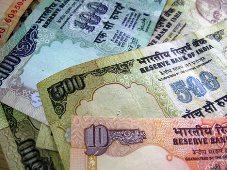 Exchange-traded funds, which have attracted a lot of investor attention globally, are also beginning to take off in India.
Exchange-traded funds, which have attracted a lot of investor attention globally, are also beginning to take off in India.
An ETF is an investment fund traded on stock exchanges, much like stocks. An ETF holds assets such as stocks, commodities or bonds.
Most ETFs track an index. They can be bought and sold through the trading day, like any stock.
In the past 14 months, the average assets under management in ETFs have almost doubled and the number of folios more than doubled.
"The number of retail investors putting money in ETFs is probably the highest at this point in time," said Nitin Rakesh, MD & CEO, Motilal Oswal MF, which has launched three ETFs.
Average assets under management of the 27 ETFs in India was Rs 5,683 crore (Rs 56.83 billion) as of February 28, up about 135 per cent from Rs 2,411 crore (Rs 24.11 billion) as of December 31, 2009.
The number of investor accounts, or folios, had risen to 409,000 as of February 28 from 203,000 as of March 31, 2010, according to Securities and Exchange Board of India (Sebi) data.
In the past, these schemes had investor attention, but only from foreign institutional investors. In December 2006, the total AAUM of six ETFs had reached as high as Rs 7,811 crore (Rs 78.11 billion).
However, a single scheme, the Banking BeES from Benchmark Mutual Fund, accounted for Rs 7,399 crore (Rs 73.99 billion) at the time.
This scheme suffered when regulators expressed their displeasure over FIIs using it as a back door to gain exposure to banking stocks. Its assets now stand at a mere Rs 44.86 crore (February 28).
Growing interest
The entry of Goldman Sachs by buying out Benchmark Mutual Fund -- a specialised ETF fund house -- gives a clear indication of the growing interest in the segment.
Goldman Sachs Group's asset management arm managed assets worth $840 billion as of December 2010.
There are expectations that international leaders like Blackrock's
iShares, State Street and Deutsche Bank will also enter the Indian market.
New Indian players such as Mumbai-based broking firm India Infoline, which received Securities and Exchange Board of India's approval to start its mutual fund business this month, also plan to start with ETFs.
"It makes strategic sense for brokerage-sponsored MF houses to launch ETFs, as they already have an existing pool of investors trading through them.
"This will help them to broaden their product offerings to those investors," said Dhruva Raj Chatterji, senior research analyst at Morningstar India.
The entry of ETFs based on foreign indices such as Hong Kong's Hang Seng index from Benchmark and Nasdaq 100 from Motilal Oswal reflects the increasing variety.
Among the 13 ETF schemes awaiting Sebi approval, seven products are based on various sectors and two on the S&P 500, according to Value Research, a Delhi-based MF tracking firm.
H N Sinor, chief executive officer at Association of Mutual Funds in India said, "Internationally, there are various types of ETFs. In India, we are largely restricted on gold so far. But there is a huge opportunity out there in ETFs."
Globally, ETFs have seen phenomenal growth in the past decade. ETF assets rose more than 10 times to $1.3 trillion as of December 2010, from $105 billion as of December 2001, show iShares' data.
Typically, ETFs charge one per cent as expense fee, whereas equity funds can charge up to 2.25 per cent. But stock picking in India is still possible, unlike other developed markets.
"In developed markets, it is difficult for a fund manager to beat a broader index. However, in the Indian context, active funds still have scope to deliver superior returns than passive funds like ETFs," Morningstar India's Chatterji said.
